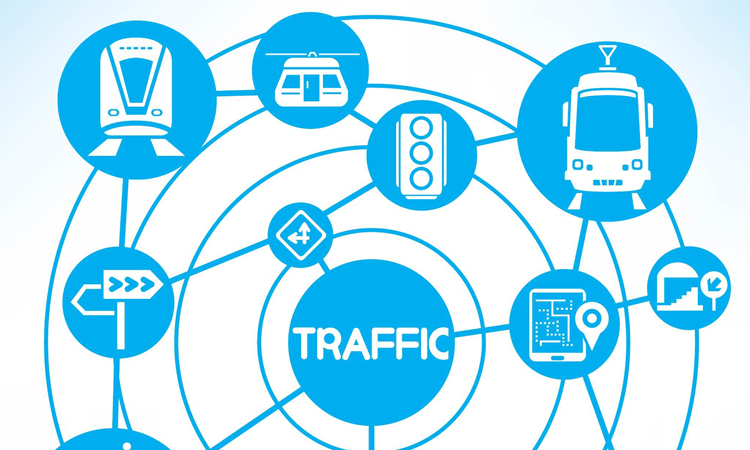ITS Netherlands and the future of public transport
- Like
- Digg
- Del
- Tumblr
- VKontakte
- Buffer
- Love This
- Odnoklassniki
- Meneame
- Blogger
- Amazon
- Yahoo Mail
- Gmail
- AOL
- Newsvine
- HackerNews
- Evernote
- MySpace
- Mail.ru
- Viadeo
- Line
- Comments
- Yummly
- SMS
- Viber
- Telegram
- Subscribe
- Skype
- Facebook Messenger
- Kakao
- LiveJournal
- Yammer
- Edgar
- Fintel
- Mix
- Instapaper
- Copy Link
Posted: 29 August 2016 | Marije de Vreeze - Connekt, Tom van Dam - Connekt | No comments yet
Marije de Vreeze and Tom van Dam from Connekt1 take a look at the key drivers for change concerning ITS and innovations for mobility and showcase some of the activities currently ongoing in the Netherlands.


Consumer orientation is a focal point in today’s marketing practices; we receive ads based on our search history and links to potentially interesting articles based on the interests of our friends on Facebook. The Internet is getting to know us and our patterns better and better. Cookies and casually accepted terms of apps on our phones collect a wealth of information. With this information, companies can approach us personally. Big data is the new oil and we are developing very complex algorithms to refine the raw data to reveal personal information and advice.
Before we consult a travel planner, Google provides the fastest options for a proposed route home, or to work. This is based on our location and travel behaviour. Google even deduces the modality and so we get a notification when there is a traffic jam due to an accident, or an alternative route suggestion in case of a mechanical defect in a railway bridge, for instance.
During our journeys, therefore, the real-time connection reduces the number of unexpected situations and our navigation system anticipates alternative routes so that we can spend our time efficiently. Also in public transport, we dispose of dynamic travel information. If a bus is cancelled it will be announced on the information signs immediately, and our mobile travel app indicates that taking the tram would be a better choice.
At Connekt1 we see three ‘drivers’ often mentioned in upcoming ITS innovations and new technologies that instigate big changes in mobility. The key drivers are data exchange, communication and Mobility as a Service (MaaS).
Public transport data exchange
In order to optimise the information and communications technology in transport and traffic, there are different platforms in the Netherlands making the exchange of these data transparent and uniform. The platform BISON (Management Information Standards OV Netherlands) aims to establish, manage, harmonise and monitor all of the standards that facilitate the exchange of information in the field of public transport.
BISON strives for collaboration and/or integration with European or international standards. The current (Dutch) standards used in the Netherlands for transparent and uniform information and communication technologies in traffic and transport are gradually supplemented or replaced by European standards.
In addition to standards, a reliable provision of data is necessary for developing new services. The Public Transport National Data project (Nationale Data Openbaar Vervoer – ND-OV) was launched in January 2011 in order to improve the data needed for public transport travel information. Both the quality (updates, use of standards, reliability) and quantity (more detail is on the way) of the data will be improved. The data will also become available with a continuity guarantee and a low-entry threshold for multiple users who will, in turn, provide travellers with the desired information about public transport. More specifically, this involves travel advice, travel guidance and information at stops. The travel information will be based on current data as much as possible. Public transport travel information includes the timetables and up-to-date information from all concession-holding operators in the Netherlands, apart from volunteer-driven neighbourhood bus services and call-up bus services.
At the heart of the project lies the licensing agreement. The NDOV is drawing up a licensing agreement designed to make data available to users. This licensing agreement will define the data and provide a continuity guarantee for users. The licensing agreement is the same for every user in order to create a level playing field.
V2I Communication
Short-range radio (KAR) can transmit data wirelessly from vehicles to stations for current travel information and dynamic traffic poles and traffic lights for priority. Public transport benefits from smoother flows at traffic lights, enabling buses to be punctual so travellers can rely on the timetable. The KAR system has been employed in a large number of traffic control systems (VRI) in the Netherlands.
An alternative technology for the KAR system currently in development is ‘Wi-Fi p’. This system not only connects public transportation with traffic lights in order to control priority, but also enables all vehicles to communicate with each other. This would enable several applications to be in place allowing for a large-scale roll-out. Public transport priority for Wifi p is underway; this is an interesting development with great potential for further efficiency in public transport and other modes.
MaaS: the future disruption?
The next step in consumer oriented marketing is Mobility as a Service (MaaS), which stands for a transition in mobility, where a consumer buys in mobility instead of investing in transport equipment. In many sectors this transition has already taken place: just think of Spotify, Uber or Airbnb. It is now time for mobility to also undergo this change. An essential change in MaaS is thinking in levels of service. New services will form a combination of classical forms of public transport, demand-based transport and private vehicles. Between these forms borders will vanish and a more integral system will evolve. It also opens-up new business cases: mobility is the number two expenditure of the average household and approximately €57 billion is spent on it by consumers alone in the Netherlands (not even accounting for expenses from the government). Add to that the WEF calculation that, with sharing vehicles, you could run the traffic demand with about 10% of the current cars – 25% if you take into account the rush hour peaks – that’s a huge potential!
Why MaaS?
MaaS is the stepping stone towards the sustainable smart city. Sustainability is an important driver. You buy in certainty and guarantee; the shift from owning to sharing makes mobility choices more explicit and more rational, not only for the traveller but also the operator. Another important driver is efficiency for the user and for mobility as a whole. After housing, mobility is the largest expense of an average family. A really good MaaS service guarantees that you will reach your destination, independent of the modality chosen, even if something unexpected happens along the way. And you can be sure to get the fastest, cheapest and most sustainable transport option. Nothing to worry about anymore! The possibility of new services in mobility – thus creating the possibility of new business models – is also a driver. The potential market is big: the average revenue per user (ARPU) for telecom is €30 a month, but the ARPU for mobility can be as much as 10 times this amount. Adding to this, MaaS is a logical next step in the changing role of governments. Next to offering different levels of service, MaaS can reduce the barriers of mobility for young and old, rich and poor, national and international visitors, leisure and business travellers.
The aspects of MaaS can be summed up as:
- Freedom of travelling: MaaS stands for freedom for users; there should be one solution for every mobility need. A ‘one-stop-shop’ for all mobility
- Travel experience: MaaS stands for a new way of moving; the magic of a vehicle being ready at your doorstep and the ease of travelling the way you want
- All-in approach: MaaS stands for the connection between different modalities; safe connections and access to all modalities without different subscriptions.
MaaS is not only something for the future: in April 2016 over 30 organisations signed the MaaSifest!2 to speed-up the adoption of MaaS in the Netherlands. We’re working on it in the Netherlands by combining the available pieces into MaaS!
Future steps
The emergence of more intelligence in our mobility and public transport provides opportunities to operate on a more consumer-oriented basis. The examples show that collaboration is the key to taking steps; collaboration in agreement about standards, data accessibility, MaaS and on an international scale.
If you want to know more about innovative and daring solutions for smart cities in the Netherlands, visit the Smart City Embassy online3.
References
- connekt.nl
- connekt.nl/wp-content/uploads/2015/10/English-MaaS-voor-copyshop-mvr.pdf
- smartcityembassy.nl
What is Connekt?
Connekt1 is an independent network of companies and authorities that links up parties to improve mobility in the Netherlands in a sustainable manner. In the ITS Netherlands programme over 200 public and private parties co-work on Smart Mobility: the application of traffic and transport solutions in order to make mobility safer, more efficient, more reliable and more environment-friendly.
Biography




Related topics
Fleet Management & Maintenance, Infrastructure & Urban Planning, Intelligent Transport Systems (ITS), Multimodality, Sustainable Urban Transport
Issue
Issue 4 2016
Related cities
The Netherlands
Related organisations
Connekt
Related people
Marije de Vreeze, Tom van Dam








